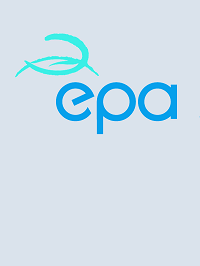Waste Electrical And Electronic Equipment (WEEE) Collection Trials In Ireland
Synthesis Report - ERTDI report 19 - Wilkinson et al
Summary: Collection trials in five locations throughout Ireland in order to characterise and quantify WEEE arisings, and to examine outlets for collected WEEE.

Executive Summary
The European Directive on Waste from Electrical and Electronic Equipment (WEEE)1 entered into force on 13 February 2003.
By 13 August 2005, Ireland must have a system in place for the collection of all types of WEEE free of charge from private households. By the end of 2006 (or 2008 if an optional derogation is taken), a collection rate of 4 kg/inhabitant/year must be achieved.
This equates to 15,200 tonnes of WEEE being collected from Irish householders every year. This project follows two previous studies by the authors on the calculation of theoretical WEEE arisings, and an assessment of ecodesign practices in Ireland (Wilkinson et al., 2001, 2002).
The project has established collection trials in five different locations throughout Ireland in order to characterise and quantify WEEE arisings, and to examine outlets for collected WEEE.
National collection systems are currently in place in sixcountries in mainland Europe. Current results from thesetake-back systems vary from 4.7 to 9.4 kg of WEEEcollected per inhabitant per year. This means that allnational collection systems currently in place in Europeexceed the target of 4 kg/person/year set by the EUWEEE Directive.
These national WEEE collection systems are operating at cost levels of between _350 and_500 per tonne of WEEE collected and processed. Basedon these costs, it is estimated that meeting the 4 kg/person/year target of the WEEE Directive would costIreland between _5.5 million and _7.8 million per year to operate a national collection system.Overall, during the 12 months of collection at the projectl ocations, more than 450 tonnes of WEEE were collectedfrom the public and recycled. Within the catchments of each facility, collection rates of between 2.1 and 3.5 kg/person/year were achieved during the 12-month trial period.
With the raising of further public awareness andthe removal of recycling fees this suggests that, on a localbasis, the 4 kg/person/year target of the Directive isachievable. It was shown that removal of a disposal feeresulted in a significant increase in collection rate,possibly due to a “clear-out” effect. Raising existing feeswas shown to reduce the collection rate, though withsome recovery after a period of time. A one-daycollection event in Kildare was very effective incollecting WEEE, and in achieving a higher than normalproportion of information and communicationstechnology (ICT) and small brown goods collection.However, on a national basis, the target becomes moreproblematic.
There is a need to increase the access to theexisting civic amenity sites, to expand the number ofamenity sites, to trial alternative collection routes such askerbside collection and one-day events, and particularlyto integrate retail take-back, to enhance anunderdeveloped collection infrastructure. The recyclingand refurbishment infrastructure is also underdeveloped,with a need to expand facilities and to adapt existingpractices to satisfy the pre-treatment requirements of theDirective, and to develop refurbishment and reusesystems, probably via social economy enterprises. It islikely that the current reliance on the export of recoveredmaterials and of equipment for specialised recycling willcontinue.
Experiences from these collection trials have been usedto establish best-practice guidelines for the collection andmonitoring of WEEE by local authorities. Based on thefindings of this project and a review of current Europeanpractices, a set of 38 recommendations can be made.These are variously applicable to local authorities,retailers, recyclers, treatment facilities, refurbishers,manufacturers, importers, Government departments,agencies and representative organisations. These willassist in the development of WEEE management and inthe implementation of the WEEE Directive in Ireland.